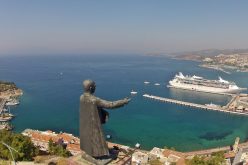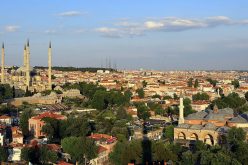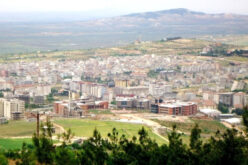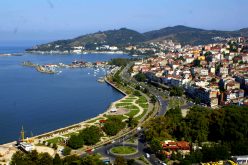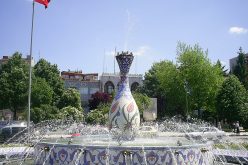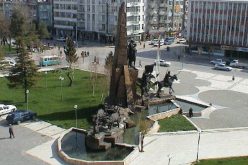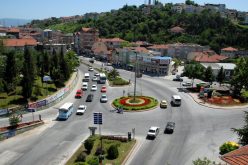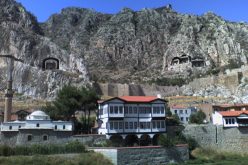Gümüşhane
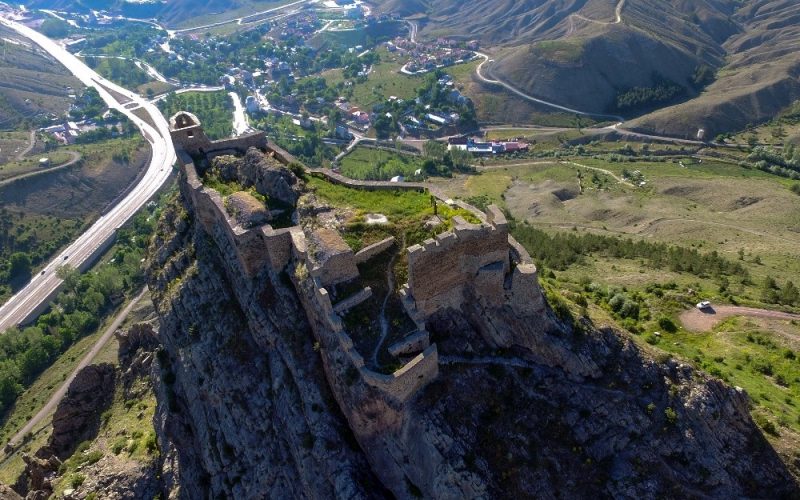
Gumushane
Gumushane, lying on the main route from Trabzon to Iran is one of Turkey`s most important cities in the Eastern Black Sea region, It is the capital of the Gumushane province. The city lies along the Harsit River at an altitude of 1210 meters above sea level, i.e., on a high plateau shaped by deep valleys and high mountains; and enjoys a moderate climate. The highest hill of the city is Abdal Musa hill, touching 3331 meters.
Gumushane province is a province of diversity. The bare rocky landscape of the south is in startling contrast to the lush green forests of the north, and even the color of the soil changes in different parts of the province. This geographical contrast is matched by cultural contrasts, with communities of Greeks, Armenians and Turks coexisting peacefully here over the centuries. The origins of the ancient settlement are steeped in mystery. During the Roman and Byzantine periods the city was known as Argyropolis; literally translated as City of silver. Later on it was ruled by Emevis, Abbasids and Seljuks, and finally the Ottomans.
Gumushane was founded on the historical trade road between Trabzon and Iran. There is no doubt that Gumushane was rich with silver mines. Gumus in Turkish means silver, and that`s most likely where the name has been derived from. The existence of silver has even been mentioned by Marco Polo and the medieval North African traveler Ibn Battutah. Once the mines were depleted, Gumushane had to dependant upon the export of fruits (chiefly apples and pears) from its orchards for its survival, and upon its position as a transit station between the port of Trabzon and western Iran. During the Ottoman Empire, Gumushane was a satellite of Erzurum and then Trabzon, but after the Republic, it became a province of Turkey. Russian occupation during World War I ruined most of the ancient city; a few ruins are a poignant reminder of the riches that once was existent. The new city built since then is now the commercial and administrative centre of the province.
Places to Visit ;
Gumushane province is like paradise – it is abundantly endowed with fruit groves, especially luscious apples, pears and juicy mulberries, and gardens of wild roses. An important point on the ancient Silk Road, Gumushane province has many fortresses such as Canca, Akcakale, Edire, Kov, Kodil and Gumustug. Gumushane history is visible in all parts of the province – ancient forts peer down from mountain tops and crags, stone bridges that were built in ancient times are still used by travelers to cross rivers, ruins mark the sites of long since abandoned ancient cities, and numerous traces of the caravan routes remain as a reminder of the traditional Silk Road.
The former Greek village of Imara facing groves of rustling poplars was once the area`s largest settlement and commercial centre. Only 60 of the original 550 houses, a monastery known to local people as Kizlar Monastery, and a scattering of churches now remain. Near the village of Cakirkaya is a rock church from where there is a magnificent view. This settlement, whose origins date back to before the Christian era, is one of the foremost ancient sites in the region.
Gumushane also has many interesting natural caves such as Karaca cave in Cebeli village of Torul district, or Akcakale and Arili caves. The Karaca cave is particularly unique as you can see an abundance of stalactites and stalagmites of extraordinary hues and shapes inside. The Tomara waterfalls in Siran district, Artebel and Limni lakes in Torul district, and Orumcek forests in Kurtun district are other wonders of nature that will dazzle you.
The Zigana Mountains offer skiing facilities at an altitude of 2032 meters, and are a great getaway as a winter sporting destination. The mountain overlooks a pine forested valley, and makes a picturesque picnic spot at other times of the year. A ski-lift, cafeteria and a restaurant at the ski center service your needs. The skiing season is from December to the end of April, and the ski run is around 200m wide, with an average gradient of 20%. Behind Zigana is Kadirga Yayla, where on the third Friday of July every year thousands of people gather for the traditional yayla festival. The old Gumushane city still has an old world charm as it has managed to retain its traditional style of architecture.
Conventional Gumushane houses, which are to be found in the old and new cities, are mostly two storied and are made of wood, stone or adobe. These houses are characteristic with their own gardens, large spacious interiors, and ornamental doors, door knockers, and windows. The roofs of these houses are steeply pitched to prevent snow building up in winter. The oldest mosque in the city is Suleymaniye which was built by the order of the Sultan in the 16th century. There are also many fountains, tombs and mausoleums remaining from Ottoman period. The Imera Monastery built in the 14th century is 38 kilometers from the city center, at Olucak village. For Christain pilgrims, the Metropolitic, Balcilar, Hegios Georgios, Ayana, Mandiri, Emirler, Cakalli and Dilek churches are worth a visit.
Write a Comment
Only registered users can comment.




